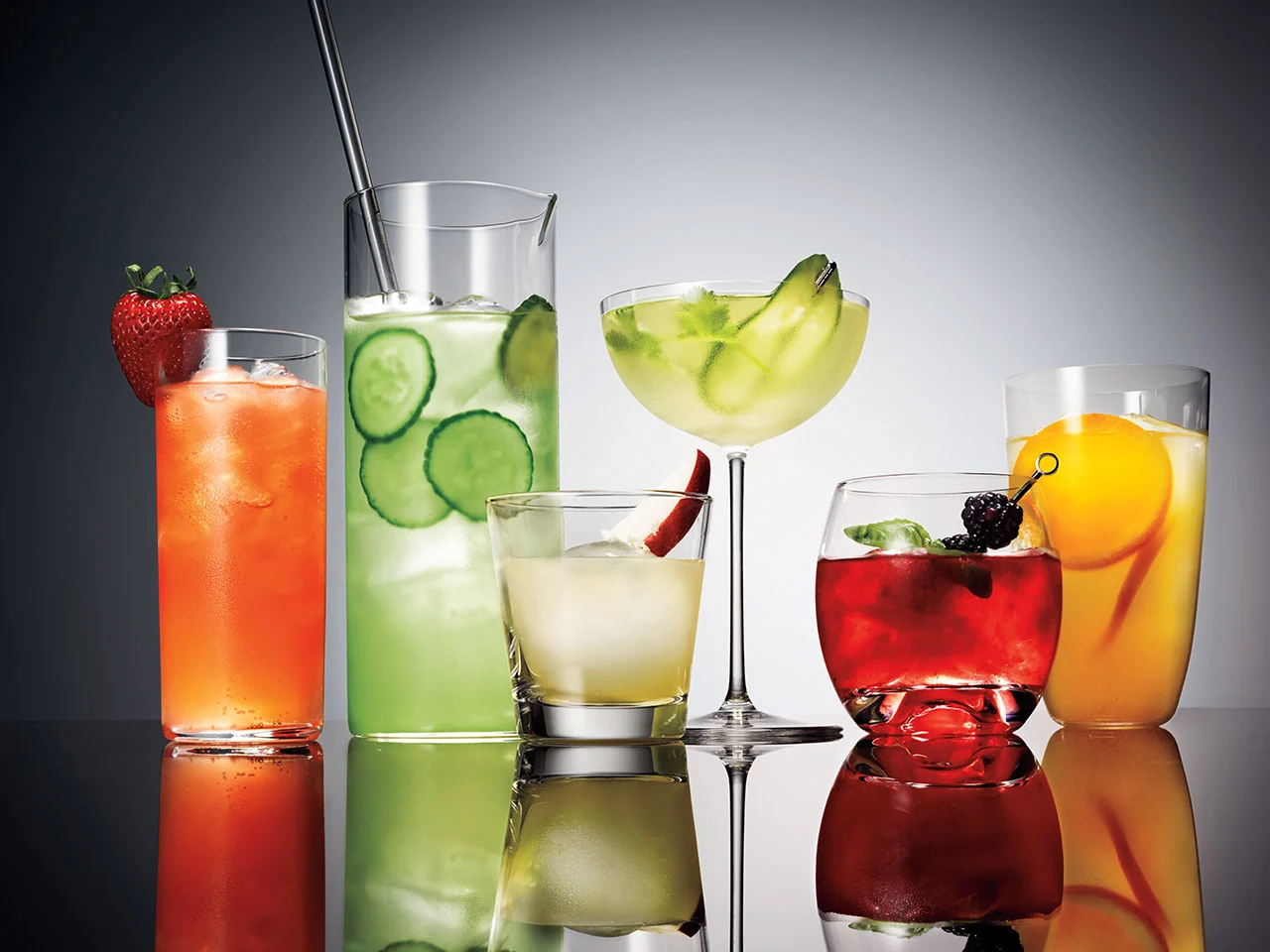What Are Session Cocktails?

Session cocktails are mixed drinks specifically crafted to contain less alcohol than a traditional cocktail. The goal isn’t to skimp on flavor—it’s to offer a more balanced and leisurely drinking experience. These cocktails are meant to be enjoyed slowly over time, making them perfect for long conversations, brunches, casual gatherings, or anytime you want to sip without feeling overly intoxicated.
The concept borrows from the term “session,” which comes from British pub culture and originally referred to beers that could be consumed in quantity without quickly leading to inebriation. Over time, that mindset transitioned into the world of mixology, giving rise to a new category of drinks: session cocktails.
Lower Alcohol Doesn’t Mean Lower Quality
One of the key distinctions of session cocktails is their lower alcohol content, but that doesn’t mean they’re any less sophisticated. Typically, a standard cocktail contains 1.5 to 2 ounces of strong spirits like vodka, gin, or whiskey. In contrast, a session cocktail will usually contain no more than ½ to ¾ ounce of high-proof spirits. Instead, they often lean on low-ABV ingredients such as:
- Aperitifs like Aperol or Campari
- Fortified wines like sherry or vermouth
- Herbal liqueurs and amari
- Sparkling wine or cider for effervescence
These ingredients allow bartenders to craft complex, layered drinks that still deliver on taste but with less punch. Think: more refreshment, less regret.
Flavor and Balance Take Center Stage
What makes session cocktails so appealing is the emphasis on flavor and balance. When you’re not relying on a heavy pour of spirits, the supporting cast of ingredients has to step up. This results in inventive combinations and thoughtful preparations that appeal to both casual drinkers and cocktail connoisseurs alike.
Rather than overpowering your palate, session cocktails invite you to savor each sip. Bright citrus, botanical notes, herbal bitterness, and effervescent finishes often play starring roles. These drinks are designed to refresh and entice, not overwhelm.
The key characteristic that defines a great session cocktail is what bartenders call “sessionability”… that magical quality where a drink feels easy to enjoy over time. It’s the kind of cocktail that invites another round without leaving you overly buzzed or fatigued.
The Origin of Session Cocktails
The word session first entered drinking vocabulary through British pub culture. “Session beers” were lower-alcohol brews that patrons could drink throughout an evening without becoming too impaired. This concept became especially useful during periods when pubs were only open for limited hours, such as during wartime Britain.
Eventually, this idea of sustainable sipping made its way into the cocktail world. By the 2010s, and especially into the 2020s, session cocktails became a growing trend among bartenders and cocktail bars. Their rise can be attributed to several key influences:
A Renewed Interest in Aperitifs
As American palates began embracing European drinking styles, aperitifs like Aperol, Campari, and vermouth experienced a renaissance. These lower-proof spirits offered bright, bitter, and complex flavors that made them ideal for building lighter cocktails. Their use broadened the possibilities for creating satisfying drinks without the need for heavy pours of hard liquor.
The Mindful Drinking Movement
In tandem with the rise of wellness culture, many consumers began seeking ways to moderate their alcohol consumption without giving up the social aspect of drinking. This shift led to a surge in popularity for low-ABV drinks—including session cocktails, alcohol-free spirits, and mocktails. The ability to enjoy a beautifully crafted cocktail with less alcohol became a form of empowerment and self-care.
The Creativity of Modern Bartenders
Bartenders embraced the challenge. Rather than seeing the lower alcohol limit as a constraint, they saw it as an opportunity to experiment and get creative. With access to a wide range of bitters, herbs, shrubs, syrups, and low-proof spirits, the modern cocktail artist has more tools than ever to craft nuanced, exciting drinks that don’t rely on alcohol content alone for their appeal.
Why Choose a Session Cocktail?
Whether you’re attending a long event, pacing yourself at a party, or simply prefer a drink that allows you to stay social without getting tipsy too quickly, session cocktails offer a smart, stylish solution. Here’s why they’re worth sipping:
- Sociability without sacrifice: Enjoy a few drinks over the course of the evening without crossing your limit.
- Complexity without the crash: Taste vibrant, layered flavors that rival any full-strength cocktail.
- A more conscious choice: Embrace a more mindful drinking experience without having to settle for soda water.
Session cocktails align beautifully with modern lifestyles that value health, social connection, and sophistication. And as mixologists continue to innovate within this space, expect to see more inventive and crave-worthy low-alcohol options on bar menus everywhere.
How to Start “Session Drinking” at Home
Ready to give session cocktails a try? You don’t need to be a mixology pro—just a few low-ABV staples can turn your bar cart into a playground for lighter, more mindful sipping. Stock up on dry or sweet vermouth, aperitifs like Lillet Blanc or Aperol, fortified wines such as sherry or port, and always have sparkling water, tonic, or soda on hand for that perfect fizzy finish. Add in fresh citrus and herbs, and you’re set. Start simple with a Lillet Spritz, a Vermouth & Tonic, or an Americano. You can also lower the ABV of classic cocktails by reducing the base spirit and topping with soda for a fresh, flavorful twist.
For a refreshing take on whiskey during the warmer months, a Summer Berry Whiskey Spritz offers the perfect balance of flavor and lightness. With a splash of dry vermouth, a touch of lemon, and fresh berries or strawberry syrup, this low-ABV cocktail is light, bright, and ideal for leisurely sipping on sunny days—without the weight of a typical whiskey drink. Here’s how to make it:
Ingredients:
- ¾ oz whiskey (a mellow bourbon or light rye works well)
- 1 oz dry vermouth (like Dolin Blanc or a semi-sweet style)
- ½ oz strawberry syrup or muddled fresh strawberries with simple syrup
- ½ oz fresh lemon juice
- 2 oz soda water
- Fresh berries and mint for garnish
Instructions:
- In a shaker, muddle the strawberries (if using fresh) with lemon juice and syrup.
- Add whiskey and vermouth. Shake with ice.
- Strain into a tall glass over fresh ice.
- Top with soda water or sparkling rosé for extra summer sparkle.
- Garnish with mint and a few fresh berries.
Experiment, have fun, and remember—the goal isn’t to mimic strong drinks with less booze. It’s to explore the pleasure of a thoughtfully made drink that supports a more relaxed, connected kind of celebration.
The Smart Way to Celebrate
Session cocktails aren’t just a trend—they’re a lifestyle shift. As more people seek moderation, flavor, and intention in their drinking habits, sessionable cocktails are taking center stage. They offer the perfect way to unwind without overdoing it, indulge without compromise, and stay present in every moment of the occasion.

Leave a Reply
Become an insider and receive weekly advice, tips, and insight on all things whiskey
.
Weekly tips, reviews and recommendations to help you enjoy whiskey life to the fullest.
JOIN THE LIST
Sippin' With Jordan Davis
sippin' with the stars
Million Dollar Cowboy Bar WY
old fashioned aF
5 Steps To Sip and Savor Whiskey
whiskey 101
COMMENTS